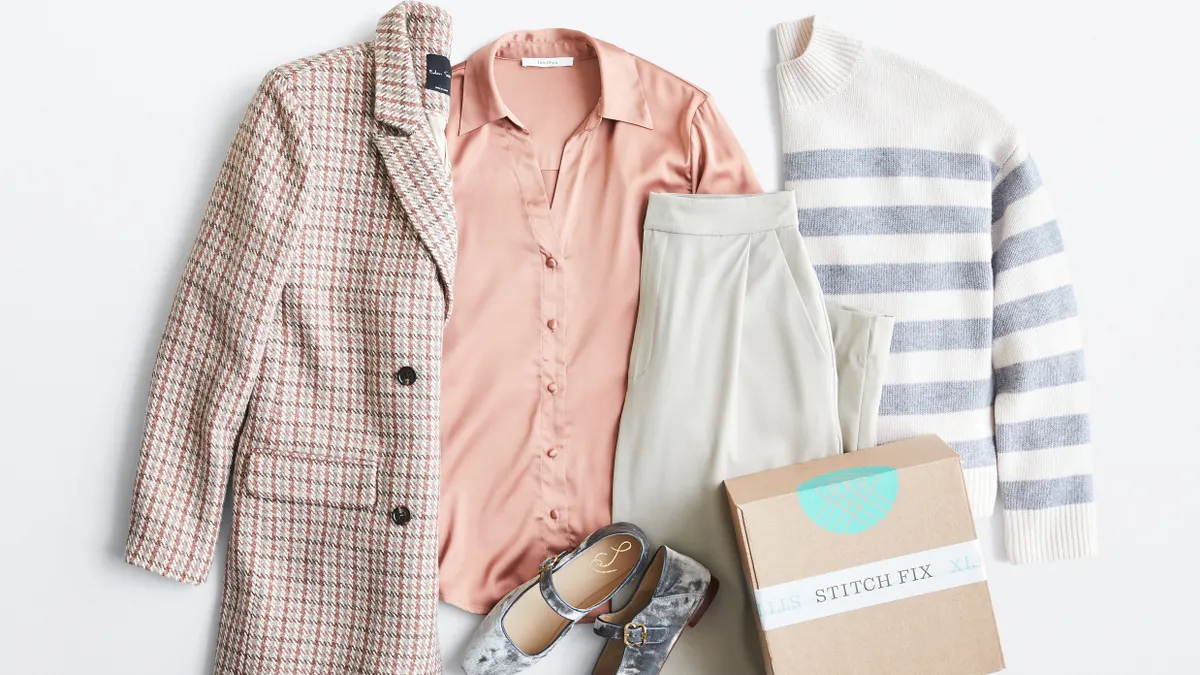Stitch Fix is back to the drawing board in its attempt to arrest declines and boost sales, after trying then abandoning a series of changes to its model in recent years,
Previously, the company had pivoted to emphasize direct sales, an option it calls Freestyle, over its curated boxes, but walked that back as customers became confused and sales dropped.
This time, the e-retailer, which sends curated boxes of clothing to subscribers at a cadence of their choice, is overhauling how it onboards new customers and interacts with existing ones.
Executives declined to provide many details, saying the new systems are still being developed, and a company spokesperson also declined to elaborate. Above all, though, the company is working to improve the initial batch of information it gets from new customers, especially when it comes to their style and budget preferences, Chief Financial Officer David Aufderhaar told analysts Monday.
The process must also be “fun,” and “engaging,” he said.
“It has to be dynamic. And because we're in the early stages of it, I'll share more as we get closer, but those are the tenets and the principles that are underlying the development of this new product,” he said.
The new product push comes as Stitch Fix on Monday said Q2 net revenue fell 17.5% to $330.4 million, with its number of active clients down 17% year over year. Net revenue per active client fell 3% year over year, with higher order value and frequency from newer customers.
The apparel box e-retailer lowered its guidance for the fiscal year, which ends July 31, saying it now expects net revenue to decline 19% to 22%, landing between $300 million and $310 million.
Previously the company said net revenue would likely drop 16% to 19%, reaching between $325 million and $335 million.
Stitch Fix is also working to decide how to balance its algorithm and human styling, leaning into tech for some customers and expanding the role of stylists for others, CEO Matt Baer said. The new program won’t cost more because, while stylists will work more for some, the algorithm will take over for others, he said.
“While some clients may rely on our service to continue to keep their wardrobe replenished and refreshed over time and require minimal interaction with stylists, you might actually see less interaction with stylists,” he said. “Other clients have been very vocal, and I’ve heard in many of the client focus groups that I've attended, that they want to have a deeper and more meaningful interaction with their stylists and then to be looking for help getting dressed or finishing out their closet in a much more dynamic and engaged way.”
Wells Fargo analysts led by Ike Boruchow noted that cost-cutting measures like layoffs, the closure of two distribution centers and the exit from its U.K. business have helped expand margins and improve profitability, as will plans to hold back marketing expenses as discussed on Monday’s call. But they and others said the lack of clarity means it’s hard to know how Stitch Fix will perform in the future.
Baer asked for patience with the company’s changes, saying, “We're in the midst of a transformation, and transformations do take time.”













